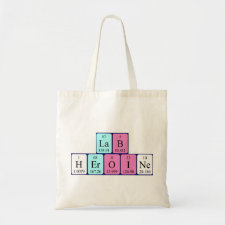
Authors: Otero-Romaní J, Moreda-Piñeiro A, Bermejo-Barrera P, Martin-Esteban A
Article Title: Inductively coupled plasma-optical emission spectrometry/mass spectrometry for the determination of Cu, Ni, Pb and Zn in seawater after ionic imprinted polymer based solid phase extraction.
Publication date: 2009
Journal: Talanta
Volume: 79
Issue: (3)
Page numbers: 723-729.
DOI: 10.1016/j.talanta.2009.04.066
Alternative URL: http://www.sciencedirect.com/science/article/B6THP-4W7YXP6-3/2/73fcc6040636befdfb190676baa18319
Abstract: The capabilities of a synthesized ionic imprinted polymer (IIP), originally prepared for Ni recognition/pre-concentration from seawater, have been evaluated for other trace elements pre-concentration. The polymer has been synthesized by the precipitation polymerization technique using a ternary pre-polymerization complex formed by the template (Ni), the monomer (2-(diethylamino) ethyl methacrylate, DEM) and a non-vinylated chelating agent (8-hydroxyquinoline, 8-HQ). Since the complexing agent (8-HQ) is trapped into the polymeric matrix, but is not linked to the polymer chains, specific interactions between the functional groups (present in the monomer and the complexing agent) and other trace elements rather than Ni may occur. Results have shown that the IIP offers imprinting properties for the template (Ni(II)) and also for Cu(II), Pb(II), Zn(II), As(V) and Cd(II), with analytical recoveries close to 100% for all elements except for As(V) and Cd(II) (around 70%), whereas the non-imprinted polymer (NIP) did not show affinity for any trace element. In addition, the polymer does not interact with alkaline or alkaline-earth metals, so Na, K, Mg and Ca from the seawater salt matrix could be effectively removed. Variables affecting the IIP-solid phase extraction (SPE) process (pH, load flow rate and concentration and volume of the eluting solution) were completely studied. Inductively coupled plasma-optical emission spectrometry (ICP-OES) and inductively coupled plasma-mass spectrometry (ICP-MS) have been used as multi-element detectors. Acidified seawater samples must only be treated to fix an alkaline pH (8.5á¦á0.5) and passed through IIP-SPE cartridges. After seawater sample loading (250 mL), analytes were eluted with 2.5 mL of 2.0 M nitric acid, offering a pre-concentration factor of 100. Therefore, the limits of detection (LODs) of the method were 0.14, 0.15, 0.18 and 0.03 μg L-1, for Ni, Cu, Pb and Zn, respectively, when using ICP-OES detection and 0.0022, 0.0065, 0.0040 and 0.009 μg L-1, for Ni, Cu, Pb and Zn, respectively, for ICP-MS detection. Accuracy of the method was assessed by analyzing SLEW-3 (estuarine water), and TM-23.3 and TM-24 (lake water) certified reference materials
Template and target information: Copper ion, Nickel ion, Lead ion, Zinc ion, Cu(II), Ni(II), Pb(II), Zn(II)
Author keywords: ionic imprinted polymer, copper, nickel, lead, zinc, seawater, solid phase extraction, Inductively coupled plasma-optical emission spectrometry, Inductively coupled plasma-mass spectrometry



Join the Society for Molecular Imprinting

New items RSS feed
Sign-up for e-mail updates:
Choose between receiving an occasional newsletter or more frequent e-mail alerts.
Click here to go to the sign-up page.
Is your name elemental or peptidic? Enter your name and find out by clicking either of the buttons below!
Other products you may like:
 MIPdatabase
MIPdatabase









